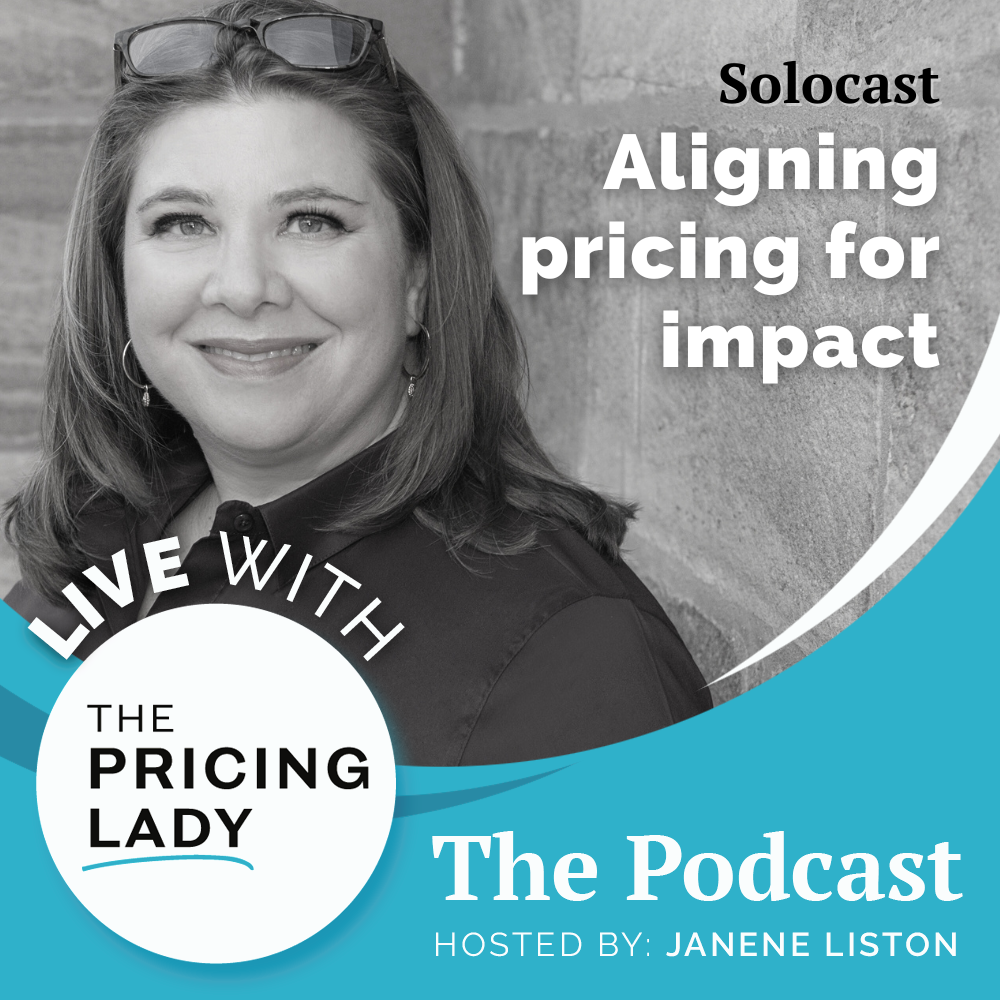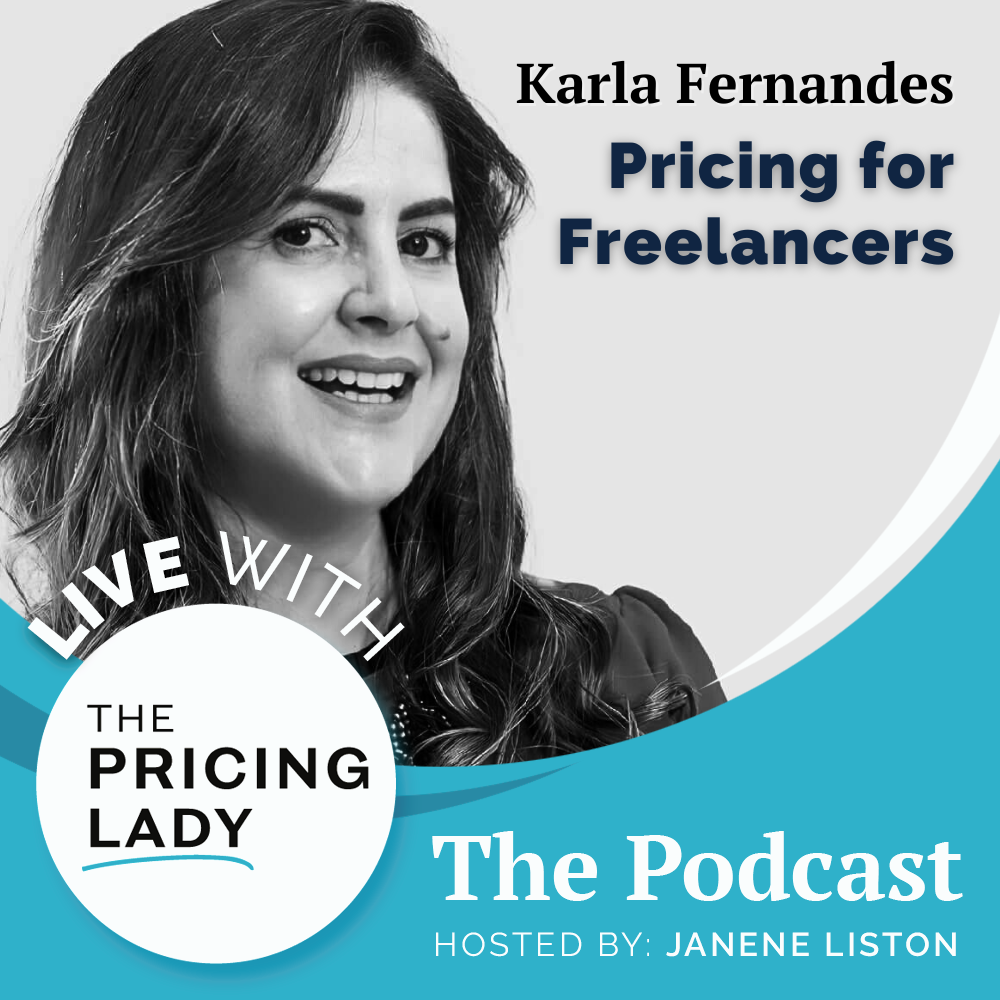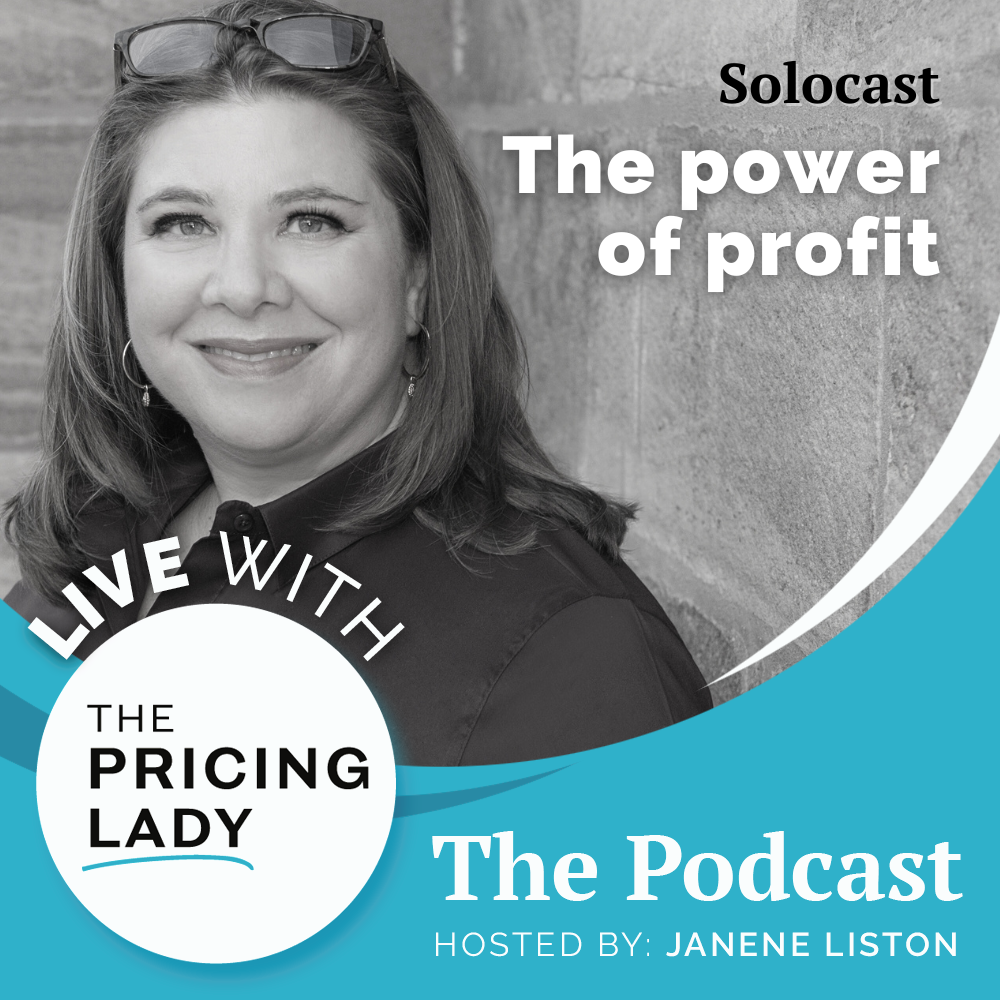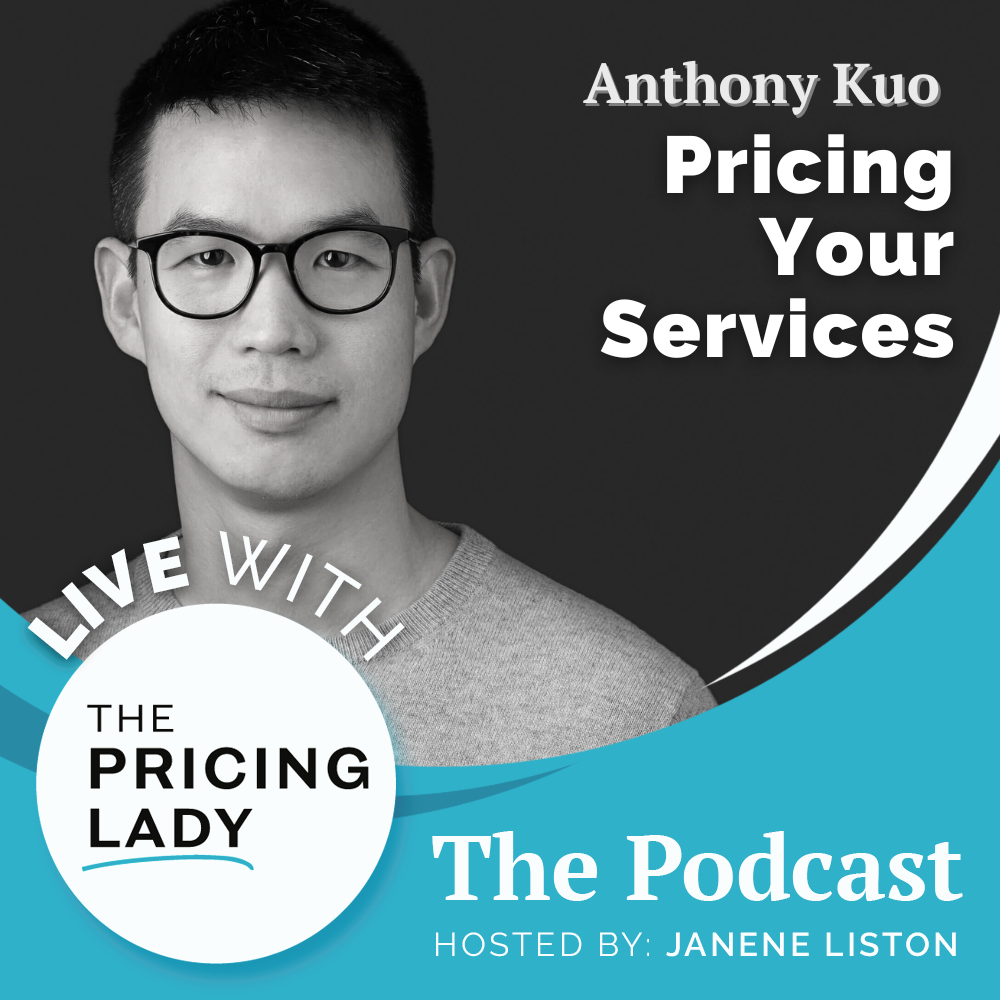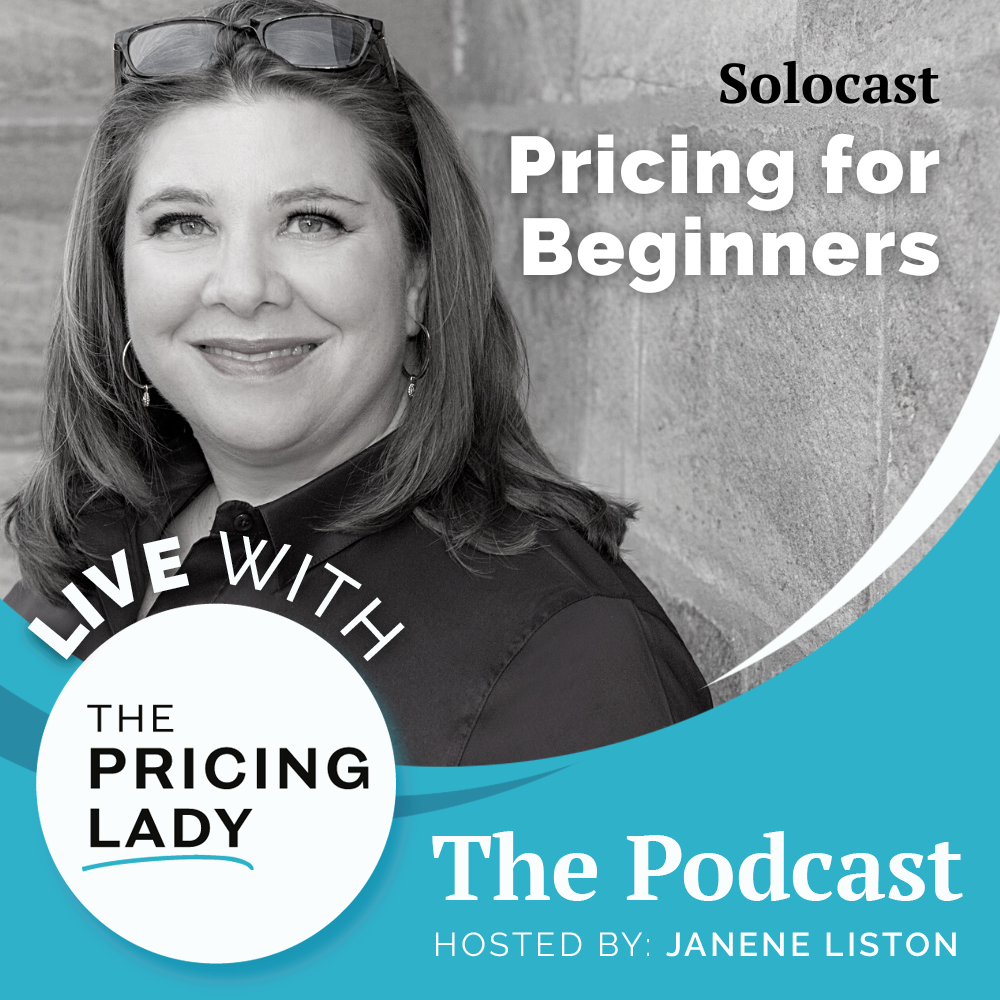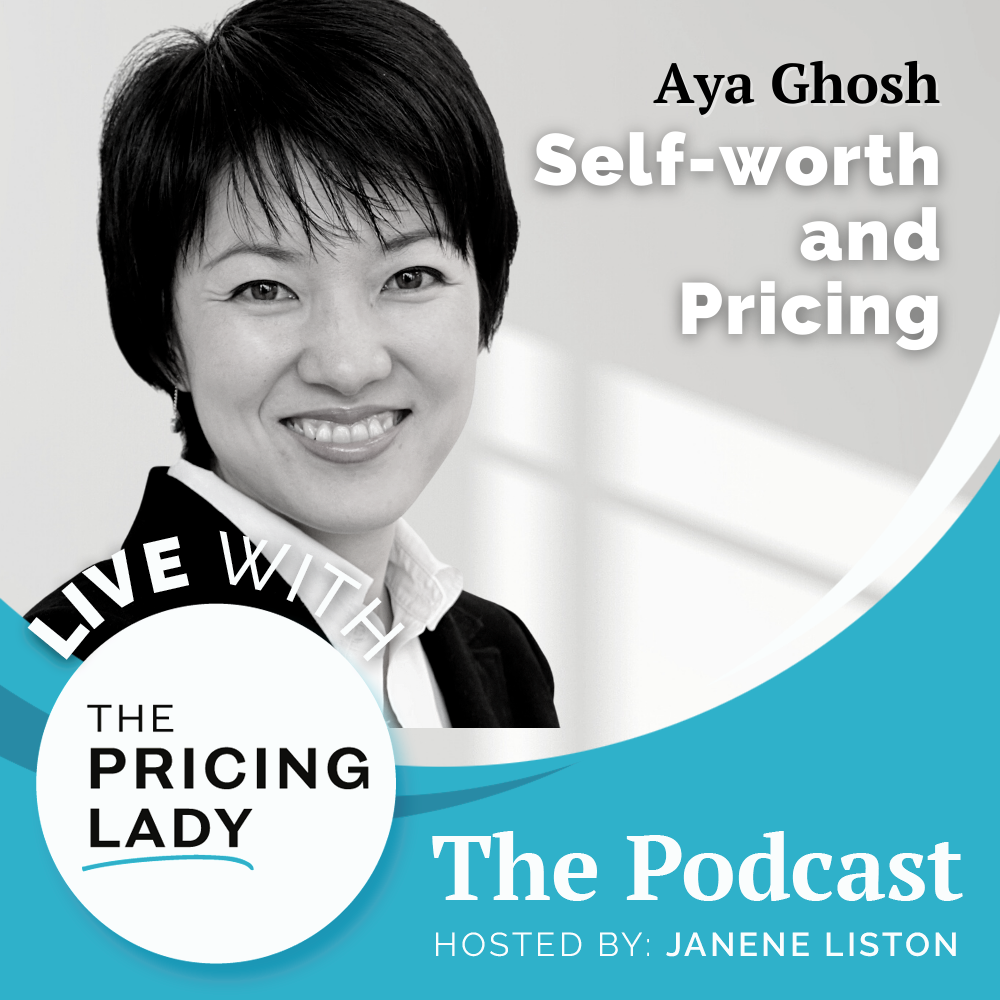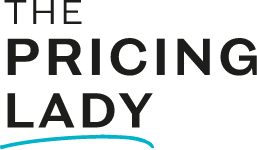Ever wondered what key steps you’re overlooking when you’re planning price increases?
Even when a business implements increases they rarely will achieve the full increase they intended. Often much is lost in the execution – leaving them with less than they planned. When you do these three things you boost your chances of putting increases in place that stick.
In this episode, I’ll take you through three critical aspects of pricing that businesses frequently overlook when changing prices. it’s easy to overlook these things. and whether you’re raising, lowering or a combination there of, these tips will help you make those changes more successfully and with more confidence. People are often afraid to raise prices and postpone it as long as possible. When they finally do it they take big risks by applying a “rip off the bandaid” approach. Trying to get it done before they panic and decide not to increase prices. In that process, they skip some really important steps that help the those planned price increases be more successful.
I break down the misconceptions and offer practical advice on how you can do this more effectively.
We’ll explore the power of differentiation – why it’s essential to vary price increases across your offerings, rather than applying the same rules to everything. Learn how mastering the math behind pricing can give you the confidence you need to make informed decisions. And we look at price communication – when to make clear communications and when a subtler approach is more suitable.
Enjoy the episode. Don’t miss out on the knowledge and strategies that can reshape your business’s future.
Podcast Episode Highlights
- 0:00 Intro
- 1:54 Overcoming Fear and Taking Strategic Steps
- 5:15 The Critical Role of Pricing Math
- 8:24 Knowing When and How to Share Changes
- 10:21 Wrapping it Up
Favorite quotes about raising prices
“I love the topic of raising prices. Not because I like to raise prices, but because I know how powerful it is for businesses.” Janene
“When people think about raising their prices. There’s a lot of fear involved.” Janene
“When you raise your prices, generally you can afford to lose a few customers and still make the same amount of money. You have to do the math in order to understand if that’s true for your business.” Janene
“Do the math, because it helps you feel more confident about the decisions that you’re making. It also allows you to mitigate any downsides of that.” Janene

“The last thing that people forget to do when adjusting their prices is look at whether or not they actually need to make a communication.” Janene
“It’s not the case that just because you’re raising prices, you have to actually make a big communication. It really depends on the business.” Janene
Episode Links
LinkedIn Article: The Boulder of Pricing Inaction
Tool Recommendation: Pricing Tool Kit
Other resources on topics from this episode
Want to learn how to set your prices? Join The Fair Price Formula group program and learn how to set prices for your business with more confidence.
Rate, Review and Follow the Show on Apple Podcasts
“I’ve just found my Pricing Resource!” … “A binge worthy podcast.” … “I learned so much about how to improve my profitability.”
If that sounds like you, please consider rating and reviewing the pricing podcast. It helps me spread the word to more people and ultimately get more small businesses on the path to sustainable profitability and business success. Click right here, tap to rate with five stars, then select “Write a Review.” Last let me know what you loved most about the episode!
If you don’t already, follow my pricing podcast. New episodes come out every couple of weeks, plus bonus episode. If you’re not following there’s a good chance you’ll miss something. And last, listen to more episodes there are more than 130 episodes to choose from from setting prices to executing them to changing them you’ll find answers to many of your pricing questions.
Reach Out, Connect and Book a Call with Janene
Linkedin | YouTube | Facebook | Email List
Get started improving your business. Beyond this pricing podcast there’s more for you to explore. Sometimes it’s difficult to know where to begin. I suggest you Download the the self assessment Pricing Scorecard to get a view of what’s working and not in your business. Also if you’ve ever wondered “What’s a fair price?” then check out my on-demand webinar “Getting to A Fair Price”. Two great places to get started with pricing in your business today.
Get in touch with Janene, your Business Strategist & Pricing Expert. If you’ve got a business question that needs answering, a pricing challenge you’re facing or you have suggestions for future topics or guests, let me know. Your questions and insights often become episodes. Share yours with me and let’s see where it goes. Contact Janene.
Listen up! Don’t miss out. There’s a lot going on and you’ll want to be in the know. Follow my YouTube channel (rate it too please) so you don’t miss an episode of Live with The Pricing Lady or join my Email List.
Transform your business and life. My mission is to help you build a sustainably profitable business. One where you can confidently charge for the value you deliver. Curious about my coaching and consulting offers, check them out. Let’s see how we can work together. Book a complimentary Call today!
Episode Transcript
Today we’re going to be talking about three things people forget to do when they’re raising their prices. I love the topic of raising prices. Not because I like to raise prices, but because I know how powerful it is for businesses. And as we’re coming up to the end of the year here, I know you are thinking about what should I do with my prices because it’s natural, right? We’re going into a new fiscal year and we’re looking at what we’re going to do in 2024.
Overcoming Fear and Taking Strategic Steps
When people are planning their price increases. There’s a lot of fear involved. Recently I wrote an article on LinkedIn. I’ll put it in the show notes about being trapped under the Boulder of inaction. That’s what I call it. The Boulder of Pricing Inaction. You have these thoughts that all your customers will leave or that people will think you’re greedy or that it’s really hard to do. And all of these are myths. They’re mindset oriented, things that are going on that keep you stuck and from taking action, even when you know you should take action. What we’re going to do today is we’re going to take a look at some of the things that people forget they can do, or they should do when they go about raising their prices.
I’ll caveat this by saying that while we’re talking about it, in the context of increasing prices, this also applies if you’re going to be lowering your prices and yes, sometimes businesses do. Choose to drop their list prices. I would say it happens less often than raising, but it can, in some cases be an effective thing to do. The tips that are talking about today apply in that context as well. So let’s take a look at the three things people forget to do when raising their prices.
Probably the biggest thing that people don’t look at or they forget to do is they don’t differentiate. And this is a big thing. Here here’s what I mean by differentiate. Most small business owners or young businesses, when they decide to increase their prices, they’ll increase everything the same. We’ll say, yep. We’re going to raise our prices 15% and they raised everything by 15%.
The Power of Differentiation
What’s the problem with this? Well, first the problem is, it’s not a very sophisticated strategy. Sure. It’s quick and easy to plan price increases. You can do it in one fell swoop. But the problem is that you have some things in your offer, some products or some services or software solutions that you offer. That are probably already well-positioned, and it would be difficult for the market to take an increase on them or a big increase on them. And you have other things in your offer, maybe like your little offers or your upsells or downsells. That people are less price sensitive on. There’s an opportunity there to raise the price on those things a little bit more than maybe your main offer.
If you don’t think about differentiating, then you run the risk of raising the price on things where people aren’t willing to pay more for it. And of not taking advantage of where they would be willing to pay more for it. You see that by doing just a flat price increase on cross everything you actually risk. Making changes that could be hurtful or harmful to your business. And, you know, when people think about raising prices and they have this vision of all their customers running away. If you’re not differentiating, then you’re actually increasing the chances that that could happen. This is one way that you can mitigate that risk is by. Raising the prices in the right. You know, for the right offers in the right way.
The Critical Role of Pricing Math when Planning Price Increases
Now the second thing that people forget to do when planning price increases, or actually, I’m not sure they forget. I think they just don’t want to do it, is the math. You know, if you follow me, I’m a big stickler for doing the math. Anytime you’re going to do anything with your pricing, you want to take a quick look at the math. Never fear. If you’re not big on math, I’ve got some tools that can help you. And we’ll put the link to my pricing toolkit in the show notes.
Why is the math so important? Well, when you’re adjusting your prices, you’re adjusting your revenue and your profit. Most people think so we’re going to talk discounts for a moment. Most people think when they offer discounts that automatically more people will buy. So they will make more money. But what they don’t realize is that they have to sell a lot more at that lower price in order to make the same amount.
Conversely, when people are raising their prices, they fear all of their customers running. But when you raise your prices, generally you can afford to lose a few customers and still make the same amount of money. Of course, you have to do the math in both cases in order to understand if that’s true for your business. That is why I don’t want you to forget to do the math. Please, please, please do the math.
The Impact of Tools in Pricing Math
Like I said, you can get access to my pricing toolkit online. It is complimentary toolkit and in there, especially two tools will help you. There’s one called the discount calculator. I think. Yup. I’m drawing a blank here, but we’ll, you’ll see it when you get into it. That one will help you understand if I lower my price by this much, how much more volume I need in order to hit, you know, this other level. Then you have the profit impact calculator. Which will help you look at your business overall. It includes things like the volume and the cost of your business. Those two very simple tools can help you do the math around. The price changes that you’re looking at doing. I have to share with you this because it always amazes me the reaction people have.
When I work with clients one to one and in the group programs for raising prices and setting prices. We have tools in those (my) programs that help people do that math more sophisticated than the ones in the toolkit that I just shared with you. Every time when somebody uses these tools, they have this massive big light bulb come on their head. They feel, and they have so much more insight and knowledge into what’s happening in their business and how those decisions that they’re making around what to do with their pricing impacts their profitability. It gives them so much confidence. This is again why it’s also very important to do the math, because it helps you feel more confident about the decisions that you’re making. It also allows you to mitigate any downsides of that.
Knowing When and How to Share Changes
The last thing that people forget to do when planning price increases is look at whether or not they actually need to make a communication. You might think Janene, what are you talking about? Shouldn’t I always communicate with my customers. Well, in fact, it really depends on your business. If your business is always new customers coming around. Then there’s less reason to be making big pricing announcements about changes in whatever. Now if your customers are repeat buyers, or if there’s a lot of price transparency for you, then of course, you’re going to want to make a communication. But it’s not the case that just because you’re raising prices, you have to actually make a big communication. It really depends on the business.
For example, let’s say you’re a service provider and you provide services, but it’s not like a repeat service that you provide to your clients. It’s something you usually do once and then go away. Well then there’s no real reason. To make a big announcement about that because you’re always bringing new customers in and either they’re going to be willing to pay for your new price or not. It’s not, there’s that level that necessity to communicate your price changes is not as obvious, let’s say as it would be, if you were in a business where you have lots of repeat customers, because then you really. You know, the relationship with them is different. And in order to maintain that trust with them, you would want to have that conversation because that’s going to impact their business or their personal budgeting for the next year.
Wrapping it Up
Those are the three things I wanted to focus on today that people forget to do when they’re adjusting or raising their prices.
From now on, when you’re thinking about adjusting your raising your prices, you are going to think about how to differentiate what you’re doing amongst different parts of your offer. Second, you are going to do the math. And I don’t know if you’ve heard me say this before, but when I was a teenager and taking piano lessons, my teacher used to threaten me when I didn’t practice enough with a thousand lashes with a wet noodle.
If you do not do the math, that is the consequence. Okay. I’m just kidding, but you know what I mean? And you’re going to think about what communication is really necessary. Yeah, it could be also that you do different communications for different customers but have a think about what’s really necessary and what actually suits your business and your customers.
That is what I wanted to share with you today. We have got next year, so many great things coming up for you. We’re going to be restructuring the podcast a little bit, and I’ll share more about that with you in early January. But I wanted to wish you a very happy holiday for you and your family and friends. I wish you all the best in the season. And of course it, enjoy pricing. I’ll see you in 2024.

